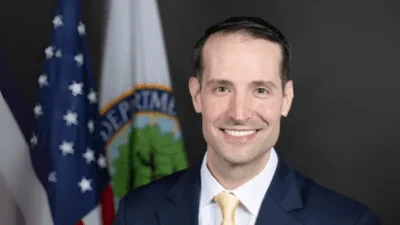ALEXANDRIA, Va. - A dramatic physical and cultural transformation is underway at the Hanford Site as portions of the Waste Treatment and Immobilization Plant (WTP) key to the direct-feed low activity waste (DFLAW) approach to tank waste treatment shift from construction to operations, senior EM and contractor representatives said last week.
“We’ve reached a point in this project that we’ve not been at before - we can see the start of tank waste treatment right in front of us," said Brian Vance, manager of EM’s Office of River Protection, during a panel session at this year’s National Cleanup Workshop.
WTP has permanent electricity, water, and power in place at its major facilities. Nearly half of all Balance of Facilities systems and five buildings have been handed over to plant management for commissioning.
The DFLAW approach will take tank waste from AP Tank Farm, pretreat it through a tank side cesium removal (TSCR) system, transfer it to the WTP Low Activity Waste Facility for vitrification, and dispose of the vitrified waste at Hanford’s Integrated Disposal Facility.
“The WTP site is a different place than it was even a year ago, and there’s a new energy to the team. We’re seeing the goal line in the distance," said Brian Reilly, senior vice president and WTP project director at ORP contractor Bechtel National, Inc., describing the shift from construction to startup and commissioning. “We have strong nuclear safety, industrial, and quality assurance programs in place and a bias for action to bring the plant online in accordance with our contract."
John Eschenberg, deputy project manager of Hanford tank farms contractor Washington River Protection Solutions, expressed excitement about delivering the TSCR capability.
“During operations, we’ll be making waste transfers every 23 hours, an operational cadence we’re not accustomed to. This requires a high level of site-wide integration, and we’re all part of that," Eschenberg said.
The federal and contractor teams are applying lessons learned from nuclear waste treatment operations across the DOE complex and from international projects.
“As a result of lessons learned, we’ve set up functional area coordination teams and integrated system planning activities to successfully deliver the project," said Scott Sax, AECOM’s senior vice president of operations, nuclear and environment.
Pam Larsen, who represents Hanford Communities, complimented the team’s approach to making DFLAW work.
“We’re encouraged that the Washington State Department of Ecology is working well to get permits in place and that DOE’s Richland Operations Office is supporting DFLAW with water, utilities, and the Integrated Disposal Facility," Larsen said.
Vance, Reilly, Sax, and Eschenberg agreed that reaching across site-wide technical, administrative, and management systems to work as one entity is key for DFLAW’s success.
“It takes great teamwork to deliver a major capital project," Vance said, “We’re strengthening those relationships across contractors, regulators, federal staff, national laboratories, and our local communities that will enable us to start treating waste as early as 2022."
Source: U.S. Dept. of Energy, Office of Environmental Management









